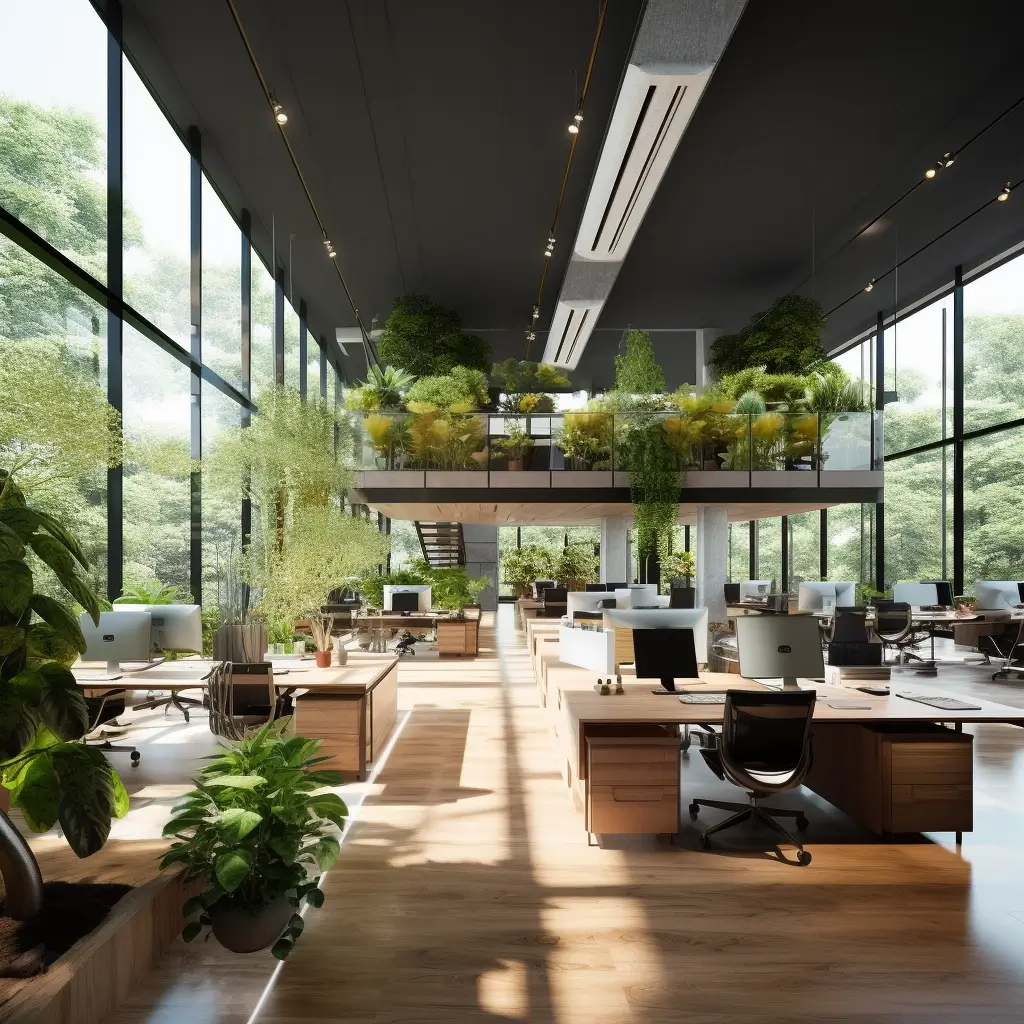The Future of UX/UI: How Biophilic Design Principles are Shaping the Digital World

The Future of UX/UI: How Biophilic Design Principles are Shaping the Digital World
In the realm of UX/UI design, we’re seeing a distinct shift toward more human, more natural designs. This shift is born from the recognition that our built environment, particularly the digital world we inhabit daily, has a profound impact on our psychological well being. As pioneers of the digital frontier, we’re starting to understand that our designs need to respect not only aesthetic values but also the intricate web of human biological needs. In a quest to align design with these needs, we’ve turned to an ancient source of wisdom and inspiration: nature.
Biophilic design, derived from E.O. Wilson’s concept of ‘biophilia,’ or humanity’s innate love for nature and life, is taking the UX/UI world by storm. But how are these principles shaping the digital world? How are they poised to sculpt the future of UX/UI design? To answer these questions, we’ll delve into the essence of biophilic design, its manifestations in digital design, and the future trends on the horizon.
Biophilic Design: A Deep Rooted Connection
Biophilia, a term coined by psychoanalyst Erich Fromm and later popularized by biologist E.O. Wilson proposes that humans have an innate desire to connect with nature. This connection isn’t just aesthetic or philosophical; it’s biological, psychological, deeply ingrained in our evolutionary history.
In the physical world, biophilic design has been adopted in architecture, where incorporating natural elements like plants, water, and natural light has been found to enhance wellbeing, productivity, and creativity. Schools, hospitals, and offices worldwide have started adopting this design philosophy, witnessing promising results.
The biophilic design theory posits that embedding natural elements into our built environment can have a significant positive impact on our psychological state. As the digital realm becomes an ever more integral part of our environment, it is logical and necessary to extend biophilic principles into this space.
Biophilic Principles in UX/UI Design
When we think of nature, we think of diversity, adaptation, growth, and vitality. How can we translate these characteristics into a digital context? How can we design digital experiences that inspire the same feelings that a walk in the forest or a mountain’s sight would?
Some might say it’s impossible. After all, how could a digital interface replicate the intricate beauty of a forest, the vastness of the ocean, or the majestic rhythm of a mountain range? But it’s not about replicating nature; it’s about embodying its principles, capturing its essence.
One of the key concepts within biophilic design is natural analogues. This is about using colors, shapes, patterns, or textures that evoke nature. In UX/UI design, this can manifest as color palettes inspired by natural landscapes, organic shapes, or animations that mimic natural phenomena. A common example is the use of skeuomorphs, like the trash can on your desktop or the folder icon in your file explorer, designed to mimic their real-world counterparts.
Another principle is the use of natural light. In digital design, this can be translated into light modes that adjust to the time of day or the season, reducing the strain on users’ eyes and aligning the digital experience more closely with the natural human circadian rhythm.
Biophilic design also emphasizes the importance of space, creating an environment that feels open and free yet safe and secure. In UX/UI design, this can translate into clean layouts, efficient use of white space, and intuitive navigation.
Future Trends
So, what does the future hold for biophilic design in the digital realm? The prospects are exciting, rich with potential.
One upcoming trend is the increased use of immersive technologies like VR and AR to create nature-inspired digital environments. Imagine a design tool that allows you to sculpt digital landscapes as if you were molding real clay, or an AR application that fills your workspace with virtual flora and fauna.
Another trend is the integration of AI in designing more responsive and adaptive user interfaces. These systems could potentially learn from the user’s behavior, adapting their aesthetics and functionality in real-time to provide a more personalized and natural experience.
Moreover, as wearable tech becomes more advanced, we’ll see more opportunities for creating digital experiences that not only mimic nature but interact with it. Imagine a fitness app that adjusts its interface based on the weather or the environment you’re exercising in.
Conclusion
As we continue to expand our digital horizons, we need to remember our roots, our deep-seated connection with the natural world. Biophilic design offers us a way to bridge the gap between the digital and the natural, creating digital environments that feel more human, more alive.
The future of UX/UI design is not about creating an alternate reality, but rather about enhancing our reality, making it more meaningful, more sustainable. By intertwining the principles of biophilic design into our digital fabric, we can create experiences that not only satisfy our aesthetic cravings but also fulfill our innate need for nature.
As Don Norman, the cognitive scientist and usability engineer, once said, “Good design is actually a lot harder to notice than poor design, in part because good designs fit our needs so well that the design is invisible.” It’s about time we apply this to digital design by harnessing the power of nature, making it a seamless part of our digital experience. After all, what’s more fitting to our needs than nature itself?